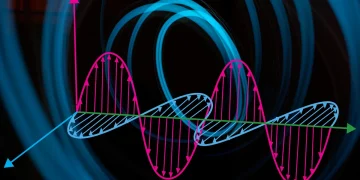Radiation, a phenomenon involving the emission and transmission of energy in the form of waves or particles, is a fundamental aspect of our universe. It encompasses a broad spectrum of phenomena, from the natural light that illuminates our surroundings to the complex interactions in nuclear reactions. This topic aims to unravel the intricacies of radiation, exploring its types, mechanisms, effects, and applications in various fields.
Types of Radiation:
- Electromagnetic Radiation: This type includes visible light, radio waves, microwaves, infrared, ultraviolet, X-rays, and gamma rays. Electromagnetic radiation travels through space as waves, with each type having different wavelengths and energy levels. For example, X-rays and gamma rays possess higher energy and shorter wavelengths, making them suitable for medical imaging and industrial applications.
- Particle Radiation: Particles such as alpha particles (helium nuclei), beta particles (electrons or positrons), and neutrons also constitute forms of radiation. These particles can carry substantial energy and can cause damage to living tissues when they interact with them.
Mechanisms of Radiation:
- Emission: Radiation occurs when energy is emitted from a source. For instance, an excited atom can emit energy in the form of light (photons) as its electrons return to lower energy states.
- Absorption: Materials can absorb radiation when they capture energy from radiation sources. This phenomenon is the basis for processes like photosynthesis, where plants absorb light energy for growth.
- Transmission: Radiation can travel through materials without being absorbed. Transparent materials, like glass, allow visible light to pass through due to the specific interactions between the radiation and the material’s atoms.
Effects of Radiation:
- Ionizing Effects: High-energy radiation, such as X-rays and gamma rays, have enough energy to remove electrons from atoms, creating ions. Ionizing radiation can damage DNA and other cellular structures, leading to mutations, cancer, and other health issues.
- Non-Ionizing Effects: Low-energy radiation, like radio waves and microwaves, lacks the energy to ionize atoms. While these forms of radiation are generally considered safe, prolonged exposure to high levels of non-ionizing radiation might still have thermal effects on tissues.
Applications of Radiation:
- Medical Imaging: X-rays and gamma rays are widely used for medical imaging techniques like X-ray radiography, computed tomography (CT) scans, and gamma camera imaging. These methods allow doctors to visualize internal structures and diagnose various conditions.
- Cancer Treatment: Radiation therapy employs focused high-energy radiation to target and destroy cancer cells. This treatment aims to shrink tumors and prevent their further growth.
- Energy Production: Nuclear reactors utilize controlled nuclear fission to release large amounts of energy, which is then converted into electricity. This process plays a significant role in providing a reliable source of energy in some parts of the world.
- Communications: Radio waves are used for wireless communication, including radio broadcasting, television transmission, and cellular networks.
Radiation is a multifaceted phenomenon with far-reaching implications across various scientific disciplines and practical applications. Understanding the different types of radiation, their mechanisms, effects, and applications is crucial for harnessing their benefits while mitigating potential risks, ensuring the safety and well-being of both living organisms and technological advancements.






























